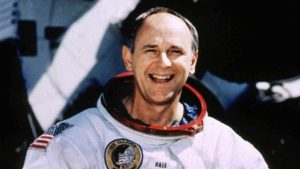There once was a time when astronauts were celebrities. We knew their names. We followed their careers. We got up early to watch them blast off from the Cape Canaveral, Fla., launch pad.
Another such astronaut — and please pardon this intended pun — has left this Earth for keeps. Alan Bean died today at age 86.
He was the fourth man to walk on the moon, aboard Apollo 12 in November 1969. He made the flight to the lunar surface with the late Charles “Pete” Conrad.
Alan Bean didn’t achieve the kind of celebrity status of, say, Neil Armstrong, Buzz Aldrin, the seven men selected to fly in the initial Mercury missions, or most of the Gemini astronauts who came along later.
Bean was among those picked for the third group of space pioneers, the Apollo program. He joined NASA in 1963 after serving as a Navy test pilot.
My years in the Texas Panhandle makes me remind you that Bean hailed from that part of the world. He was a native of Wheeler, a tiny town east of Amarillo.
My most glaring memory of Bean’s time on the moon stems from some innovative measures he took to deploy a camera on the lunar surface. The camera wouldn’t start taking images. What did Bean do? He grabbed a hammer and beat on the device! Then it worked.
NASA doesn’t have a manned space program of its own these days. We’re sending our astronauts into space aboard Russian rockets. I’m trying to imagine how Presidents Kennedy and Johnson would react to that bit of aerospace irony.
Back in the day, though, Alan Bean was among those individuals we prayed for when they rocketed into space. As President Kennedy said about the goal of sending astronauts to the moon and returning them safely, “We don’t do these things because they are easy. We do them because they are hard.”
Alan Bean and his colleagues just made it look easy. It wasn’t. He needed to beat on a state-of-the-art camera with a hammer to enable the device to record his history-making adventure for the rest of time.
May he now rest eternally.

